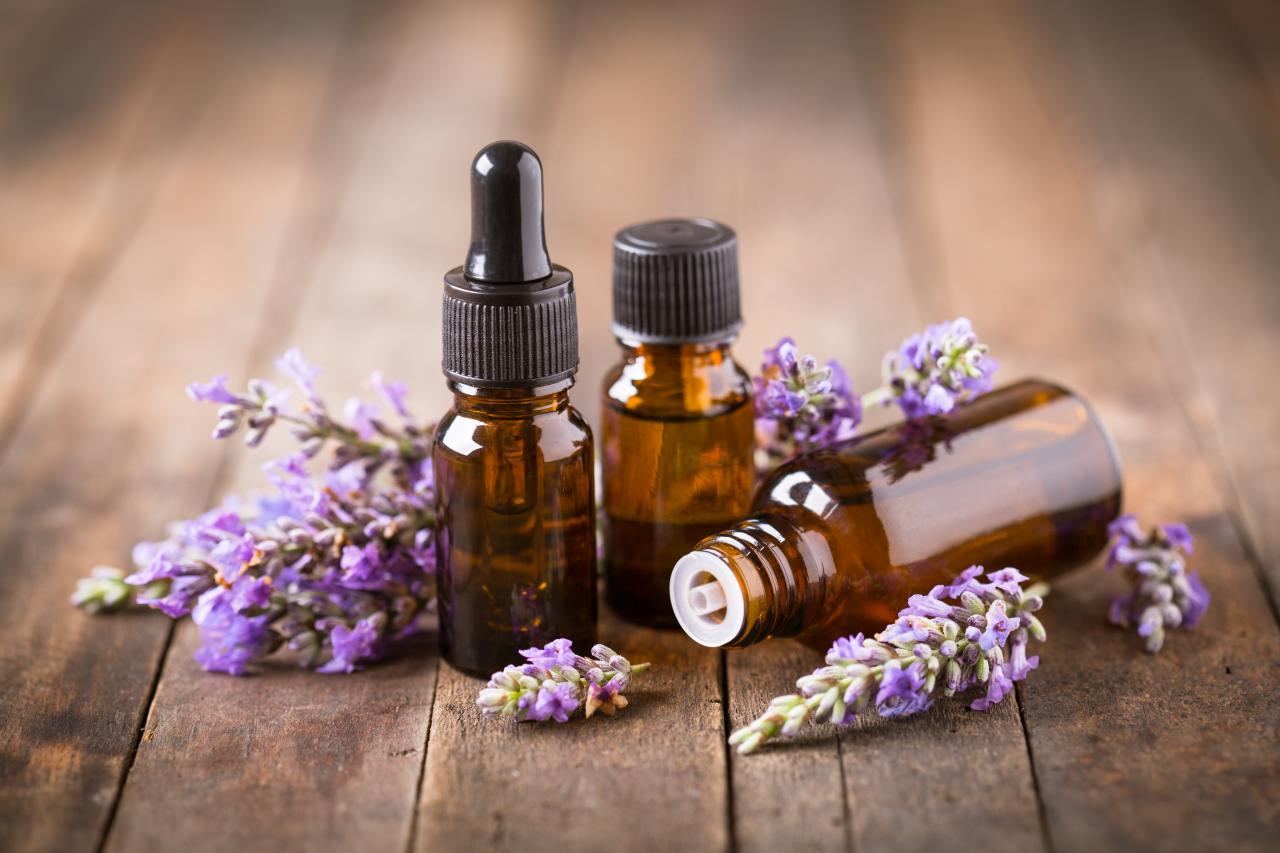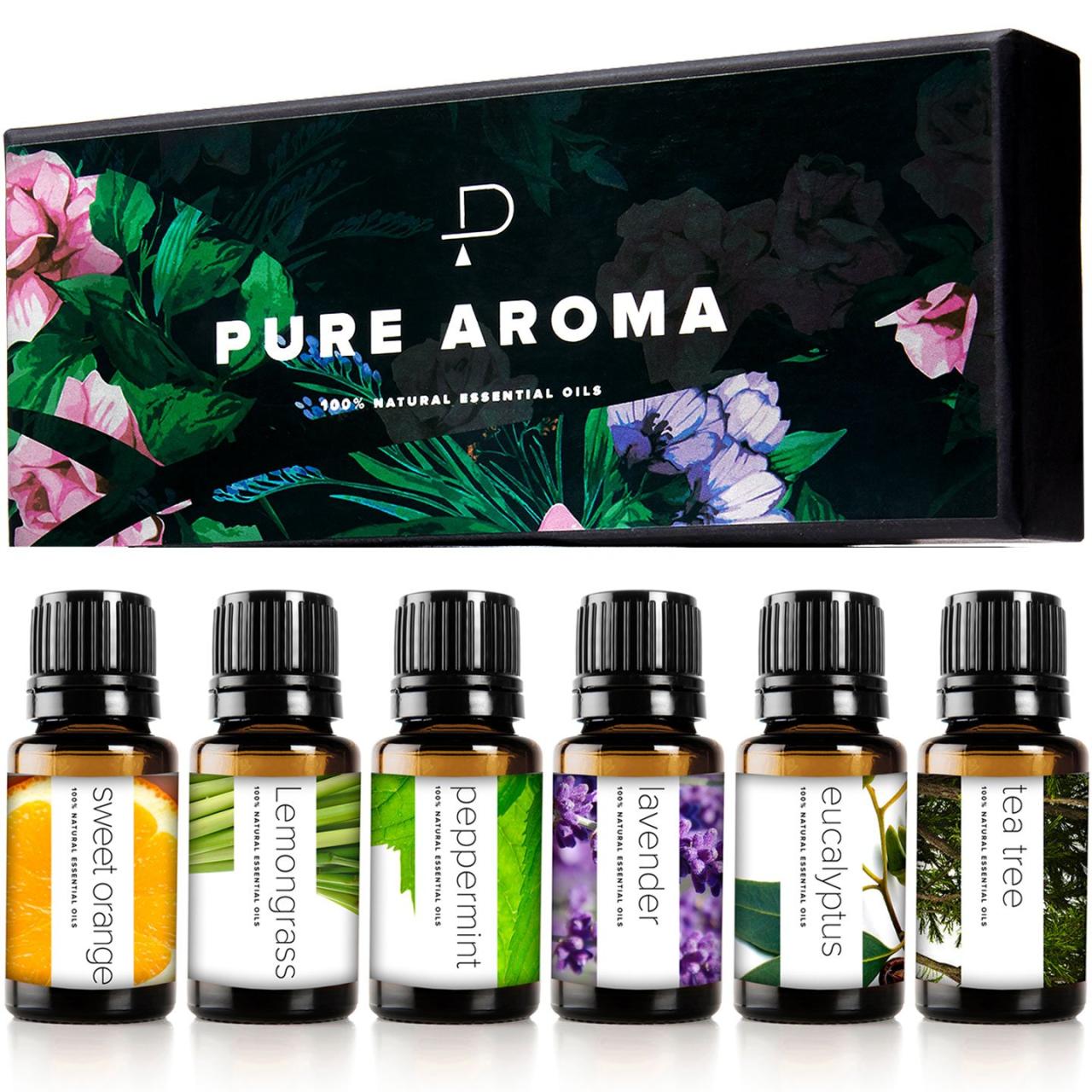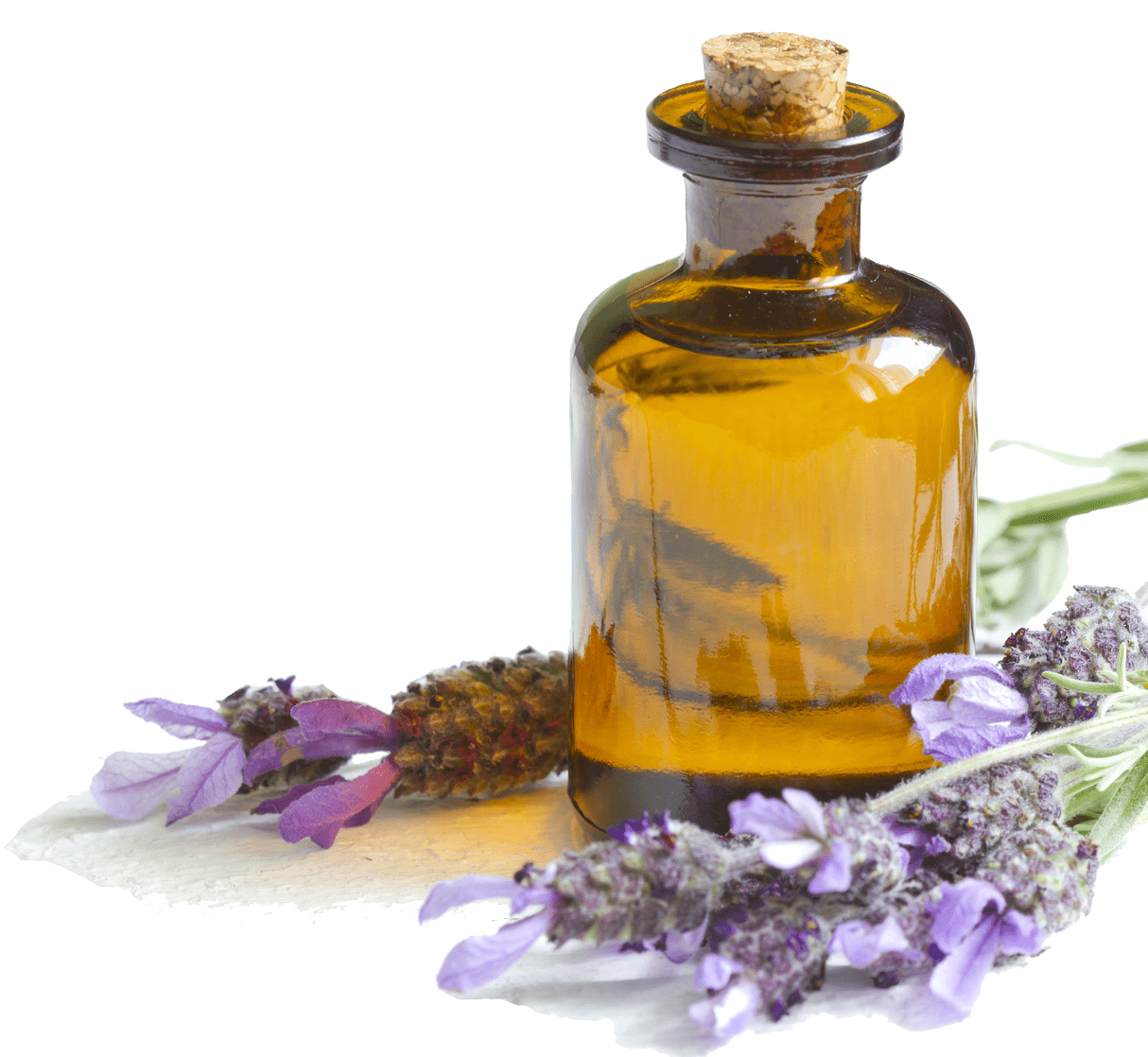In a world where stress and ailments pervade our lives, essential oil aromatherapy emerges as a beacon of holistic healing and sensory indulgence. Join us as we embark on an aromatic adventure, exploring the therapeutic powers of essential oils and their transformative effects on our well-being.
From ancient civilizations to modern-day practices, aromatherapy has captivated hearts and minds with its ability to soothe, revitalize, and uplift. In this comprehensive guide, we delve into the techniques, benefits, and safety considerations of essential oil aromatherapy, empowering you to harness the transformative power of nature’s fragrant essences.
Aromatherapy Techniques and Applications
Aromatherapy utilizes essential oils, extracted from plants, to promote physical and emotional well-being. It involves various techniques to inhale or apply the oils, creating a holistic approach to health.
Inhalation Methods
- Direct Inhalation:Inhaling the scent of essential oils directly from the bottle or a diffuser can provide immediate effects on mood, alertness, and stress levels.
- Steam Inhalation:Adding a few drops of essential oils to hot water and inhaling the steam can help clear congestion, promote relaxation, and relieve respiratory issues.
- Nasal Inhalers:Essential oil blends can be used in nasal inhalers to provide quick relief for headaches, nausea, and respiratory discomfort.
Topical Application
- Massage:Essential oils can be diluted with carrier oils (e.g., jojoba, coconut) and massaged into the skin to promote relaxation, reduce pain, and improve circulation.
- Baths:Adding a few drops of essential oils to a warm bath can create a relaxing or invigorating experience, promoting stress relief, skin health, and muscle recovery.
- Compresses:Essential oils can be applied to a compress and placed on the skin to reduce inflammation, soothe pain, or promote wound healing.
Diffusion
- Electric Diffusers:Essential oils are diffused into the air using an electric diffuser, releasing their scent and creating a therapeutic atmosphere.
- Reed Diffusers:Reed sticks are placed in a bottle containing essential oils, allowing the scent to gradually diffuse into the surrounding air.
- Passive Diffusion:Essential oils can be placed on a cotton ball or tissue and left in a room to slowly release their scent.
Applications of Aromatherapy
Aromatherapy has various applications, including:
- Relaxation and Stress Relief:Essential oils like lavender, chamomile, and ylang-ylang have calming effects, promoting relaxation and reducing stress.
- Pain Management:Certain essential oils, such as peppermint, eucalyptus, and rosemary, have analgesic properties, providing relief from headaches, muscle pain, and joint discomfort.
- Mood Enhancement:Essential oils like citrus, cinnamon, and bergamot have uplifting effects, improving mood and reducing symptoms of depression.
Research and Studies
Numerous studies have demonstrated the effectiveness of aromatherapy in various settings. For instance, a study published in the journal Evidence-Based Complementary and Alternative Medicinefound that inhalation of lavender essential oil significantly reduced anxiety levels in patients undergoing surgery.
Essential Oils for Aromatherapy

Essential oils are concentrated plant extracts that capture the aromatic and therapeutic properties of their source plants. They are widely used in aromatherapy, a holistic practice that utilizes the scents and chemical compounds of essential oils to promote relaxation, improve mood, and alleviate various health conditions.
Essential oils contain a complex blend of chemical compounds, including terpenes, esters, alcohols, and ketones. These compounds interact with the body through the olfactory system and skin absorption, influencing the nervous system, immune system, and various physiological processes.
Popular Essential Oils
Numerous essential oils are used in aromatherapy, each with unique aromas and therapeutic properties. The following table lists some popular essential oils and their key characteristics:
| Botanical Name | Aroma | Therapeutic Properties |
|---|---|---|
| Lavandula angustifolia | Floral, herbaceous | Relaxing, calming, sleep-promoting |
| Citrus sinensis (Sweet Orange) | Citrusy, uplifting | Mood-boosting, stress-reducing |
| Mentha piperita (Peppermint) | Minty, invigorating | Stimulating, headache-relieving |
| Eucalyptus globulus | Camphoraceous, refreshing | Decongestant, antibacterial |
| Melaleuca alternifolia (Tea Tree) | Medicinal, spicy | Antiseptic, antimicrobial |
Selecting and Blending Essential Oils
Selecting and blending essential oils for aromatherapy requires consideration of their individual properties and the desired therapeutic outcome. For example, lavender and chamomile oils are often combined to promote relaxation and sleep, while peppermint and rosemary oils can be blended to enhance focus and energy.
When blending essential oils, it is important to start with small amounts and gradually adjust the proportions until the desired aroma and therapeutic effect are achieved. It is also essential to dilute essential oils in a carrier oil, such as jojoba or almond oil, before applying them to the skin.
Safety Considerations in Aromatherapy
While essential oils offer therapeutic benefits, it’s crucial to be mindful of potential risks and precautions associated with their use. Essential oils are highly concentrated plant extracts and must be handled with care to ensure a safe and enjoyable experience.
Essential oils should never be ingested directly. Some oils, such as pennyroyal, can be toxic if swallowed. Additionally, essential oils should be diluted before applying them to the skin to avoid irritation or allergic reactions.
Dilution Ratios
Proper dilution is essential for safe topical application of essential oils. The recommended dilution ratio varies depending on the oil and the intended use. For general use, a dilution of 2-3% is recommended. This means adding 12-18 drops of essential oil to 100ml of carrier oil, such as jojoba or coconut oil.
Contraindications and Interactions
Certain essential oils may have contraindications or interact with medications or medical conditions. For example, pregnant women should avoid using certain oils, such as clary sage and rosemary, as they may stimulate uterine contractions.
Individuals with certain medical conditions, such as epilepsy or asthma, should consult with a healthcare professional before using essential oils. Some oils, such as eucalyptus and peppermint, may interact with medications, so it’s important to disclose any medications you’re taking to your healthcare provider.
Aromatherapy in Different Settings
Aromatherapy offers a versatile approach to wellness that can be seamlessly integrated into various environments, from the comfort of homes to serene spas and healthcare facilities. By harnessing the therapeutic properties of essential oils, aromatherapy can enhance the ambiance, promote relaxation, and support overall well-being.
Each setting presents unique opportunities for aromatherapy. In homes, it can create a cozy and inviting atmosphere, promote relaxation after a long day, and support sleep. Spas utilize aromatherapy to enhance the relaxation and rejuvenation experience, while healthcare facilities leverage its therapeutic benefits to alleviate stress, promote healing, and reduce anxiety.
Sample Aromatherapy Protocol for a Home Setting
Essential Oils:Lavender, chamomile, bergamot
Application Method:Diffuse using an essential oil diffuser or add a few drops to a warm bath.
Expected Outcomes:Promotes relaxation, reduces stress, and creates a calming ambiance.
Case Study: Aromatherapy in a Healthcare Facility
A study conducted in a hospital setting found that aromatherapy with lavender essential oil significantly reduced anxiety and improved sleep quality among patients undergoing surgery. The soothing aroma of lavender helped calm their nerves and promote relaxation, facilitating a more comfortable recovery experience.
Research and Innovation in Aromatherapy

Aromatherapy, an ancient practice, has witnessed significant scientific advancements in recent times. Research milestones have laid the groundwork for understanding the therapeutic potential of essential oils, while emerging technologies promise to revolutionize its applications.
Timeline of Significant Research Milestones
- 1937:René-Maurice Gattefossé, a French chemist, accidentally discovers the healing properties of lavender oil on a burn.
- 1964:Jean Valnet, a French physician, publishes “Aromatherapy: The Art and Science of Essential Oil Therapy,” popularizing the use of essential oils for therapeutic purposes.
- 1970s-1980s:Studies explore the physiological and psychological effects of essential oils, establishing their potential for stress relief, pain management, and mood enhancement.
- 1990s-Present:Research focuses on the chemical composition and pharmacological properties of essential oils, leading to the identification of specific compounds responsible for their therapeutic effects.
Current Trends and Emerging Technologies
Aromatherapy continues to evolve, driven by technological advancements and innovative applications:
- Nanotechnology:Nanoparticles enhance the delivery and absorption of essential oils, increasing their therapeutic efficacy.
- Inhalation Devices:Advanced inhalers and nebulizers provide precise and controlled delivery of essential oil vapors.
- Wearable Technology:Diffusers and personal inhalers integrated into clothing or jewelry offer convenient and discreet aromatherapy experiences.
- Virtual Reality (VR):VR environments simulate aromatherapy experiences, allowing users to immerse themselves in therapeutic scents.
Areas for Further Research
Despite the progress made, further research is needed to fully understand the potential and limitations of aromatherapy:
- Long-Term Effects:Studies are needed to evaluate the long-term safety and efficacy of aromatherapy.
- Synergistic Effects:Research should explore the interactions between different essential oils to optimize therapeutic outcomes.
- Clinical Trials:More rigorous clinical trials are required to establish the evidence base for aromatherapy’s therapeutic claims.
- Regulation and Standardization:Establishing clear guidelines for the production, quality control, and labeling of essential oils is crucial for ensuring consumer safety and product consistency.
Final Review

As we conclude our exploration of essential oil aromatherapy, we recognize its profound potential to enhance our physical, emotional, and spiritual well-being. Whether seeking relaxation, pain relief, or a deeper connection to nature, essential oils offer a natural and effective path towards holistic healing.
Remember, aromatherapy is a journey of self-discovery and empowerment. By embracing the wisdom of essential oils and incorporating them into our daily lives, we unlock a world of aromatic possibilities, where fragrance transforms into a catalyst for health, harmony, and boundless well-being.